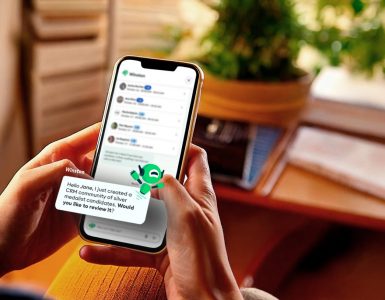Improving hiring capabilities has always been a mixture of updates to processes and technologies. As you look ahead, it’s helpful to know where simple process changes can help you, and where you might need to apply technology to solve your hiring challenges. Here are six capabilities to consider as you look at where to improve next.
1. Attract & engage candidates in your sleep
A smart career website is a gift that keeps on giving. Why? By leveraging SEO-driven content, job seekers can land on relevant information that introduces them to your company. Once they land on your site, a smart career site delivers personalized content to keep candidates engaged—and it remembers them when they return.
According to research from the Talent Board, smart career sites are the number one recruiting technology for attracting hard-to-find talent in 2024. To learn more about career site features, check our post Four Amazing Career Sites and Why We Love Them.
2. Optimize job board spending
How do you know if you’re spending too much? How do you know if you’re spending in the right places? TA teams that are being asked to do more with less don’t have time to manage job board contracts and do the tedious work of making sure spending is allocated in the most efficient way. Research shows that after smart career sites, job distribution software is the number two recruiting technology for attracting hard-to-find talent in 2024.
- SmartJobs offers centralized job board management, real-time optimization of spending, and data analytics that give you an end-to-end view of how job advertising channels impact hiring results.
- SmartDistribute gives you the capability to manage all job posting contracts and credits from one platform. Getting a comprehensive overview of every job board and aggregator removes the guesswork about which job boards are filling your talent pipeline and which are underperforming.
3. Quickly surface top candidates based on skills
The hype around skills is real: 92% of companies report that they’re investing in reskilling and upskilling to fill specialized roles. Boolean strings are the old way; skills-based AI represents the new way to surface top candidates.
With the AI-powered SmartAssistant, recruiters can surface top candidates based on skills and educational requirements that they define. Recruiters can adjust match scores by inserting or deleting skills and noting their importance to the role.
- 47% of companies have already implemented or plan to implement AI-powered candidate matching in the next year.
4. Reach candidates where they are
Most candidates have smartphones, but would rather message on them than talk or use email. “There are still organizations out there trying to figure out if they’re going to use SMS,” Josh Rock, Talent Acquisition Manager, Nuss Truck Group said in a webinar with ERE. “What are you waiting for?”
SmartMessage is an ATS feature that integrates SMS and WhatsApp messaging so that recruiting teams can view all candidate communications in one place. It speeds up the hiring process by enabling seamless, transparent communications in the format that candidates use most.
- 42% of companies have already implemented or plan to implement text messaging/SMS in the next year.
5. Automate workflows customized for different role types
Different roles have different hiring needs–and different teams approach the hiring process differently. Customizable hiring workflows allow diverse approaches to hiring while keeping the employer brand promise. At SmartRecruiters, we believe customization capabilities should sit with recruiting teams, not HRIT—which is why we’re enabling SmartWorkflows that adapt to hiring team needs. The ability to make instantaneous adjustments to hiring workflows improves both the candidate and recruiting team experience while reducing the time to hire.
More efficient workflows helped Catholic Healthcare double its hiring volume while reducing the time to hire from 51 to nine days.
SmartRecruiters made it possible to specialize the recruitment process to the unique needs of each part of the business. The ability to set up automated workflows and screening questions for 30 role types helped us process 42,000 candidates to date.
Christine Marriot, Recruitment Manager, Catholic Healthcare
6. Granular pipeline analytics to diagnose bottlenecks
Time-to-hire doesn’t tell the full story of the success of your hiring function, nor can it tell you exactly what needs to change. Getting granular about your hiring pipeline and using the reporting function to measure time in stage can have a meaningful impact on the overall time to hire while improving the quality of hire.
Get started by drilling down on each stage, including applicant review, phone screen, recruiter screen, interview, etc., and filtering by hiring team role or individual. A close analysis will show you where a specific team or team member is holding back the process. Colliers EMEA used pipeline analytics to streamline hiring so well that six-month new hire retention improved by 25%.
What fascinates me about SmartRecruiters is that you can go to the day, the hour, the second of an intervention. It gives us the ability to understand the trends in our recruitment business, diagnose how well things are working, and identify where the opportunities sit. It’s also really intuitive, so you can’t get it wrong.
– Ben Handyside, Director of Talent Management, EMEA, Colliers
Moving from good to great to excellent
No matter where you are on the scale of hiring maturity, each small step you make toward improving your team’s capabilities contributes to a stronger talent acquisition function. As Ben Handyside at Colliers EMEA said, “There are more opportunities coming by embracing and enhancing rather than fearing change.”
To get started on change-making in the new year with an applicant tracking system or career site upgrade, get in touch with us for a demo today.






